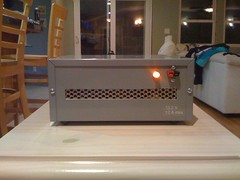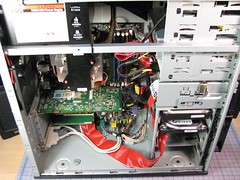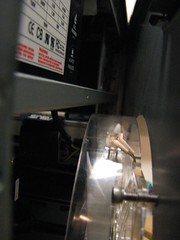Harmonic pollution is a growing problem in Europe and one that designers of power continuity programmes and manufacturers of Ups (uninterruptible power supplies) cannot ignore. Typical harmonic problems consist of the distortion of mains power supply voltage, overheating of wiring, neutral conductors, supply transformers and switchgear and nuisance tripping of breakers. Harmonics can also cause disruption to equipment on the same supply and lead to random failures.
Harmonics are caused by voltage or current waveforms with frequencies that are multiples of the basal frequency - in Europe, 50Hz (50 cycles per second). The multiples are all the time ordered in a specific sequence: for example, the 2nd harmonic is 100Hz (2x50Hz), the third 150Hz and the fourth 200Hz and so on.
High Voltage Power Supply

The particular problem of Triplens (third order) harmonics. Harmonics are a particular issue for power continuity management due to the large estimate of switch mode power supply (Smps) loads being connected to modern electrical distribution networks - and their connected Ups systems. These are the most coarse form of power supply unit (Psu) in use today. As a non-linear load, they draw their power in quarterly modulated pulses of current from a mains power supply rather than as a continuous linear supply. This can lead to Smpss generating high levels of harmonics, especially when many are being supplied from a particular three-phase mains power supply.
In particular, ideas designers must be aware of the potentially damaging Triple-Ns (or Triplens) whose harmonic order numbers are multiples of three and consist of the notorious third-harmonics as well as ninths and fifteenths. Thirds are probably the most interesting harmonic in terms of neutral conductor loading within a three-phase system. Whereas other harmonics cancel each other out, third-harmonics are in phase with each other and exhibit a summing succeed which greatly increases the current - potentially overloading conductors and switchgear.
Harmonics and total power factor - implications for Ups sizing. Harmonics are also intimately connected to power factor management - and other key aspect of uninterruptible power supply ideas fabricate and implementation. The displacement power factor is only applicable to the basal frequency (50Hz in Europe) and therefore does not take into account the power factor generated by any harmonics induced into the mains power supply by the load itself (referred to as the distortion power factor and produced by the harmonics produced by non-linear loads). The blend of the displacement power factor and the distortion power factor gives what is known to Ups systems experts as the true power factor. When correctly sizing a Ups, an understanding of this is critical.
Mitigation of total harmonics distortion. Harmonics issues need to be addressed at the fabricate stage of any power continuity plan. Not least, because consumers are responsible for the harmonic levels introduced into their three-phase mains power supply.
A Ups can sometimes be fitted with a harmonic filter (post installation) but this can be a precious and inelegant solution as broad internal wiring changes may be required. For a transformer-based Ups, using a 12-pulse rectifier in place of a 6-pulse set will cut the levels of Thdi (total harmonic distortion). Coupling this with a passive filter will supply added discount to colse to 4%.
For a transformerless uninterruptible power supply, Thdi levels of less than 4% can be achieved by installing an active harmonic filter. However, levels as low as 3% can now be achieved by some designs whose rectifiers are Igbt (Insulated Gate Bipolar Transistor) based. This can take off the need for an added active harmonic filter and simplify the Ups fabricate process. Such designs are startling to come to be the norm: not only do they cut initial costs, but they allow a smaller Ups ideas footprint whilst increasing input power factors.
Active harmonic filters cut the impact of prominent power factors. When designing a power continuity plan and Ups system, various methods can be applied to cut the impact of prominent power factors (where the current waveform leads the voltage waveform): ensuring that prominent power factors characterize a smaller division of the Ups load, installing power factor correction between the Ups and the load, increasing Ups size (and that of any standby generation capacity) and specifying a Ups with prominent power factor capabilities.
A beloved arrival to cut the succeed of prominent power factors on a Ups factory is to use an active harmonic filter with power factor correction on the Ups output. This presents the Ups with a more suitable load, but results in higher capital and factory costs, lower efficiency and a greater footprint.
Familiar territory for Ups manufacturers. Although many aspects of harmonics must be considered when specifying a Ups system, reassurance can be gained from the fact that this is well-known territory for Ups manufacturers such as Riello Ups. End users and their expert advisers can assuredly be confident that this specialized aspect of Ups application will be wholly addressed while the modern consultative sales and specification process.
Uninterruptible Power Supplies and Harmonics
high voltage power supply
Low Pressure Sensors


















